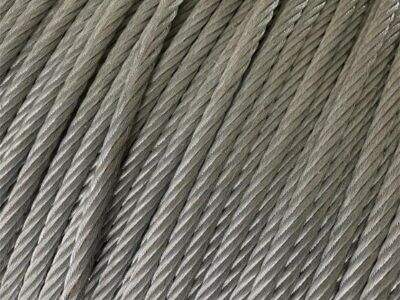The Basics of How Wire Rope
The different uses of wire rope depend on a different combination of both characteristics. To get a better feel for wire ropes, however, it’s important to understand their construction, including strands, cores, and lay. Qingdao Powerful Machinery Co., Ltd. designs and manufactures lifting chain of the highest quality, and for beginners, it is crucial to understand the basics of wire rope construction. In this article we will learn about the major elements that compose wire ropes and the effect they have on safety and performance.
The Basics of Wire Ropes
A wire rope is composed of individual wires that are twisted to form strands. The strands are what give wire rope its strength and flexibility. The lifting chains and slings is the number of wires used with 6 wires being the stiffest and 1 wires being the most flexible, requiring longer bristle length however, less abrasive action. When a wire rope is designed its strand make-up is important. Depending on the application, wire rope may have a certain number of strands or a specific type of wire, with the Super Swage being just one of these options.
The Inside Story of Wire Ropes
Every wire rope is constructed around a core that supports the entire configuration and keeps it straight. There are two types of wire rope cores; fiber cores and wire cores. Natural or synthetic fiber cores provide strength, flexibility, and cushion, reducing risk of wear and spliced filaments. lifting sling chain contribute added strength and crushing resistance, but tend to settle. Selecting the correct core wire rope type is crucial for loading capacities and environmental considerations at hand, as well as at any other time you’re looking to make the best selection for the job.
Lay Types: Understanding the Twist
Lay types describe the direction and angle that wires and strands are twisted together to make a wire rope. The three principal lay types are regular lay, lang lay, and reverse lay. Common lay has a left twist for the wire, and an SPRI (Society of Plastics and Rubber Industry) grade is a medium lay with a left twist for stranded wire for good flexibility and resistance to fatigue and wear. Lang lay features a longer lay length, which makes it fatigue resistant and stronger when under load. Reverse lay, as its name implies, rotates the cables and strands in the other direction for increased resistance to crushing and wire rotation. Choosing a proper lay for a wire rope is important for getting the maximum service life and the best performance.
Understanding How Wire Rope Is Made for Newbies
The construction of wire ropes can be a complex subject to those new to the industry. But the beginner can get a handle on the basics of the key elements that affect the strength and performance of a wire rope: strands, cores and lay types. Understanding how these elements interact to provide different loads and resist various conditions is critical in making the right decisions in the specification and selection of wire rope.
The Ideal Wire Rope Construction Choices
When it comes to all of the many considerations of selecting wire rope for use in your specific application the construction is without question one of the most widely important factors to take into account. Load capacity, operating conditions and necessary flexibility can all contribute to selecting the best wire rope for the application. By knowing how strands, cores and lay types affect performance, users can make an educated decision that will help safeguard their operation and equipment while increasing the job site’s productivity.
The Importance of Understanding Wire Rope Assemblies
The safety and performance of wire ropes are paramount, especially within an industrial environment. An understanding of how wire rope is constructed with strands, cores and wire properties, will help guide the safe use of wire rope and prevent wire rope failure. Understanding how these parts interrelate and add to the overall strength and robustness enables users to put correct maintenance and inspection measures in place, thus helping to protect both personnel and the equipment itself.
the understanding of wire rope construction can reveal its complexity and functionality. Explore strands, cores, and lay types To the beginner, the construction of wire rope could not be more basic, but by learning more about strands, cores, and lay types, they will surely have a greater respect for the strength and flexibility of the product. The selection of the right wire rope for a particular application is dependent on a knowledge of how these individual components work together to counteract loads under differing environmental conditions. We strive to provide that knowledge and experience to users so that they too can promote safety and excellence in every wire rope application.

